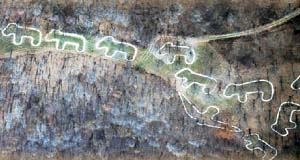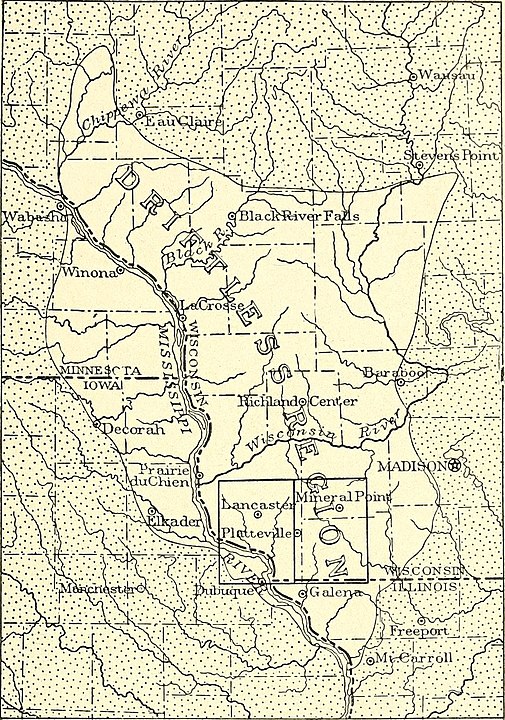Road Trip Through History: Effigy Mounds National Monument
When My Own True Love and I reached the end of our Great River Road trip last October, we stopped just short of Effigy Mounds National Monument in northeast Iowa.
As far as I was concerned it was both frustrating to walk away from it and something to look forward to. I’ve been interested in the mound-building cultures of the Americas ever since I was a nerdy little girl with dreams of being an archaeologist, and I’ve been dragging other people to mound-related sites ever since. Lucky for me, My Own True Love is both a good sport and endlessly curious.
We went to the Effigy Mounds site on a damp morning, which meant the site trails were treacherous for those of us who had not thought to pack hiking boots in addition to rain boots. (i.e. both of us.) That means we didn’t get a good look at the mounds themselves, but the site’s interpretive center was fabulous, as they so often are.* They told the story of the site in several different ways: within the larger context of mound-building cultures, within the context of Native American peoples in the area (including their interactions with Europeans), and as part of the story of the archaeology of the Upper Mississippi region. They also did a spectacular comparison of different types of tools and pottery horizontally across a vertical timeline that ran from the Paleolithic cultures (ca 10,000 BCE) through the Oneota people ( ca. 1300-1650 CE)
Here are the highlights:
- The basics: We know of three major mound-building cultures that flourished at different times along the Mississippi River: the Hopewell culture, which flourished around 300 BCE, the Mississippian culture, centered on Cahokia, which flourished between 800 and 1400 CE, and the Effigy mound builders, who flourished between 700 and 1300 CE.**
- Unlike the mounds produced by the Mississippian and Hopewell cultures, the effigy mound builders built animal-shaped mounds that are often described as birds and bears.***
- Most of the effigy mounds builders lived in the Driftless Area: a geological concept that became a recurring theme of the trip, and possibly the most important thing we learned. (After all, geology is history on the grand scale, right?) Here’s the short version: In geology, the word “drift” means the rocks and sediment left behind by glaciers. Because most glaciers missed the triangular area made up of southwestern Wisconsin, southeastern Minnesota, northeastern Iowa, and the extreme northwestern corner of Illinois, they left no drift behind. They also didn’t press the area flat the way they did other portions of the American Midwest, creating a region that feels mighty comfortable for a transplanted Ozarker like myself.
In short, a stop worth making. Though I wish I’d had my boots.
*Can we get a round of applause here for the National Park Service?
**It is worth pointing out that both the mound-building cultures and the great cultures of Latin America are often described as “ancient cultures”. If you look at the dates, this is only true of the Hopewell culture. While these cultures were prehistoric in the sense of not having written histories, the Mississippian and effigy-mound cultures were both contemporary with the European medieval period. The Aztecs and the Incas were contemporaneous with Early Modern Europe. Rant over.
*** In the site’s introductory film, a National Park Service archaeologist carefully pointed out “As an archaeologist I cannot say this a a bear.” I honor the academic rigor behind his caution. But they sure look like bears to me. And exhibits in the center pointed out that bears, with their annual death and rebirth in the form of hibernation, had religious significance for later Native peoples of the region. I chose to believe in bears.







This was such an interesting post. I hadn’t realize that the Aztecs and Incas were around at the same time Early Modern Europe was developing. Cool! But there really does need to be better public education about stuff like that.
Part of the problem is that we look at history in geographical isolation. I’m stunned by how often it is a revelation to look at what else is happening at the same time as an event I’m studying